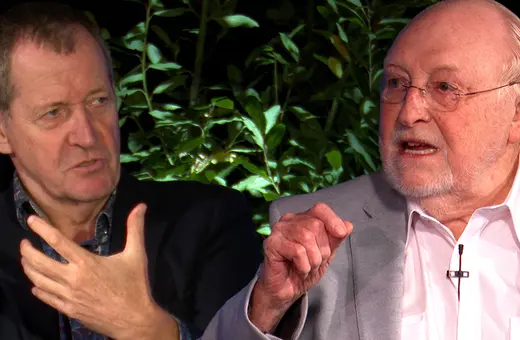Holy women in medieval Christendom displayed their piety in ways associated with food, much more than holy men did. They miraculously survived without eating anything at all or subsisted on nothing but the Eucharist, had visions of Christ giving them the host, and spoke of drinking Christ’s blood or feeding souls in Purgatory with their own blood, according to Caroline Walker Bynum’s findings in Holy Feast and Holy Fast: the Religious Significance of Food to Medieval Women. Among the spectacular acts of asceticism ascribed to figures like Catherine of Siena was (readers of a nervous disposition may want to skip the rest of this sentence) the eating of lepers’ scabs and drinking of pus from their sores.
In seeking to explain this, Bynum began from the observation that women in medieval Europe, as in most pre-modern cultures, were responsible for the preparation of food. So it was the one resource they could control directly, and the one thing they could readily renounce. Food-related miracles also allowed them to challenge the religious authority claimed by men. Only male priests could administer the sacraments, but the various visions and wonders connected to the Eucharist allowed women their own special role in this holy encounter with Christ. Above all, and contrary to assumptions that female asceticism involved a hatred of the body, Bynum pointed out the centrality of God’s incarnation to medieval Christianity. By emphasising and relentlessly shaping their own embodied nature, women could identify more fully with the Saviour and participate in his suffering.
Why would female religious fasting be relevant to us today? For a few reasons, from exploring power dynamics between men and women to attitudes towards food – the power it has over us and the way we sometimes exercise power in the way we eat it – and all this in a culture that laid the foundations for modern Western society.
___
"Asceticism was an alternative means of being a philosopher"
___
In the Greek-speaking medieval world of the Byzantine Empire, we see that pious men and women indulged in punishing forms of asceticism, giving up such wealth as they had, embracing chastity, and subsisting on the most meagre of nourishment. This movement, the forerunner of more formally organised monasticism in both West and East, found its highpoint with the hermits of late antiquity. Most famous are the “desert fathers”: male figures like Simeon Stylites. He lived at the top of a pillar for years, supposedly without eating, and when the devout flocked to seek his advice and blessings, he just got himself a taller pillar to escape from the attention. But there were “desert mothers” too. Collections of the legends and wise teachings of the desert ascetics mention women alongside the men, like the female hermit Syncletica who lived in the fourth century. Women also sponsored monastic communities, like Melania the Elder, who founded a community for pious women in Palestine.





















Join the conversation